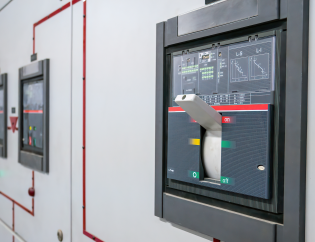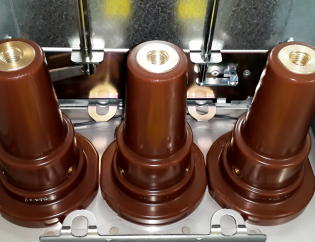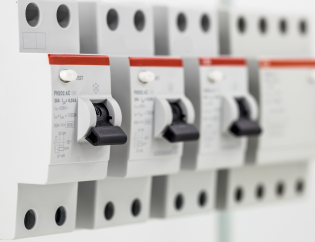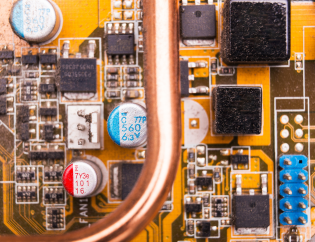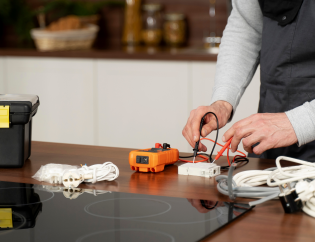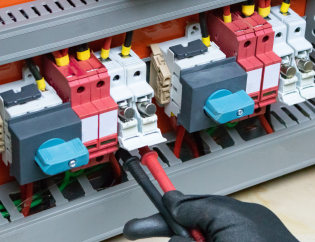This guide will cover the basics of LV/MV/HV switchgear, including its functions, types, and components.
Functions of Switchgears
Switchgear serve several critical functions in electrical systems, including:
- Control: Switchgears control the flow of electricity from the power source to various electrical equipment and circuits. They allow the operator to turn on or off individual equipment or circuits as needed.
- Protection: Switchgears protect electrical equipment and circuits from overloads, short circuits, and other faults. They contain protective devices such as circuit breakers, fuses, and relays that detect and interrupt abnormal electrical currents.
- Isolation: Switchgears isolate electrical equipment and circuits from the rest of the system. They allow the operator to disconnect individual equipment or circuits for maintenance, repair, or replacement without affecting the rest of the system.
Upgrade your switchgear to improve the reliability of your power supply and minimize downtime. Call us now to discuss your options.
Types of Switchgears
There are three main types of switchgear based on their voltage rating: low voltage (LV), medium voltage (MV), and high voltage (HV).
- Low Voltage (LV) Switchgears: LV switchgear are designed for systems with a voltage rating of up to 1000V. They are commonly used in residential, commercial, and small industrial applications. LV switchgear typically include circuit breakers, contactors, relays, and fuses.
- Medium Voltage (MV) Switchgears: MV switchgear are designed for systems with a voltage rating between 1kV and 36kV. They are commonly used in industrial and commercial applications such as factories, data centers, and hospitals. MV switchgear typically include circuit breakers, load break switches, and disconnect switches.
- High Voltage (HV) Switchgears: HV switchgear are designed for systems with a voltage rating of above 36kV. They are commonly used in large industrial applications such as power plants and substations. HV switchgear typically include circuit breakers, disconnect switches, and surge arrestors.
Components of Switchgear
Switchgears are made up of several components that work together to control, protect, and isolate electrical equipment and circuits. These components vary depending on the type and voltage rating of the switchgear. Here are some of the standard components found in switchgear:
- Circuit Breakers: Circuit breakers are the most critical component of any switchgear. They are designed to protect electrical equipment and circuits from overloads, short circuits, and other faults. Circuit breakers work by automatically interrupting abnormal electrical currents, preventing damage to equipment and reducing the risk of fire.
- Contactors: Contactors are electromagnetic switches that allow the operator to control the flow of electricity to individual equipment or circuits. They are commonly used in LV and MV switchgear.
- Load Break Switches: Load break switches are used in MV switchgear to isolate electrical equipment and circuits from the rest of the system. They allow the operator to disconnect individual equipment or circuits for maintenance, repair, or replacement without affecting the rest of the system.
- Disconnect Switches: Disconnect switches are used in HV switchgear to isolate electrical equipment and circuits from the rest of the system. They allow the operator to disconnect individual equipment or circuits for maintenance, repair, or replacement without affecting the rest of the system.
- Relays: Relays are electromagnetic devices that detect abnormal electrical currents and send signals to circuit breakers to interrupt the flow of electricity. They are commonly used in LV and MV switchgear.
- Fuses: Fuses are protective devices that are designed to interrupt the flow of electricity in the event of an overload or short circuit. They are commonly used in LV switchgear and provide protection against low-level faults.
- Surge Arrestors: Surge arrestors are protective devices that are designed to protect electrical equipment and circuits from voltage surges caused by lightning strikes or other transient events. They are commonly used in HV switchgear.
Conclusion
Switchgears are essential to any electrical system, from small residential circuits to sizeable industrial power grids. They serve critical functions such as control, protection, and isolation, ensuring the safe and efficient operation of electrical equipment and circuits. There are three main types of switchgear based on their voltage rating: low voltage (LV), medium voltage (MV), and high voltage (HV). The components of switchgear vary depending on the type and voltage rating but typically include circuit breakers, contactors, load break switches, disconnect switches, relays, fuses, and surge arrestors. Understanding the basics of LV/MV/HV switchgear is essential for anyone working with electrical systems, from engineers to technicians to electricians.
Looking for customized switchgear to meet your specific electrical needs? Look no further than ECSKSA! We can help design and build switchgear tailored to your unique requirements. Contact us today to learn more about our custom switchgear solutions.
Do you have a question in your mind? If so, make sure to fill out the form below!




